Wisdom Tooth Extraction
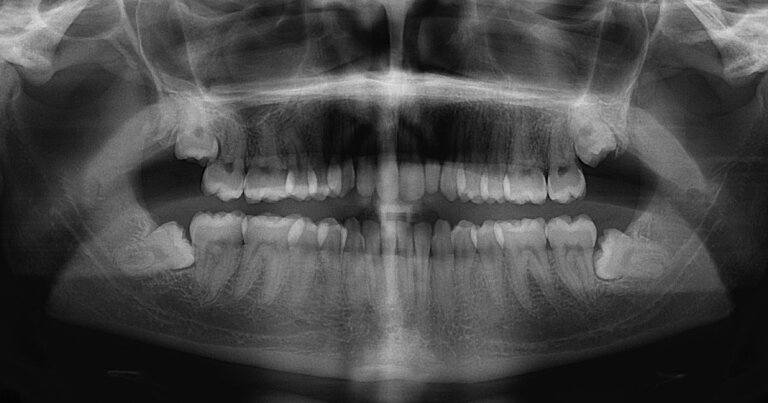
What is Wisdom Tooth Extraction?
Wisdom Tooth Extraction is a common tooth removal procedure that aims to address various oral health concerns associated with the third molars, commonly known as wisdom teeth. These teeth typically erupt between the ages of 17 and 25, a time when individuals have matured into young adults and gained some wisdom—hence the name.
However, wisdom teeth often cause problems due to their late eruption, misalignment, or inadequate space in the jaw. As a result, dentists often recommend their removal to prevent potential complications and maintain overall dental health. Before you deciding on whether Wisdom Tooth Extraction is right for you, there are some things you should know:
- Who Needs Wisdom Tooth Extraction?
- Benefits Of Wisdom Tooth Extraction
- Potential Risks Or Complications Of Wisdom Tooth Extraction
- How Much Does Wisdom Tooth Extraction Cost?
- Steps In The Wisdom Tooth Extraction Procedure
- Frequently Asked Questions About Wisdom Tooth Extraction
If you have any further questions about Wisdom Tooth Extraction or other dental services offered at Atlas Dental, please contact us.

Free phone consultation
Have questions about Toronto wisdom teeth extraction? Book a free phone consult with our Toronto dental clinic

5 star google reviews
See for yourself why more and more people are choosing Atlas Dental for same day wisdom tooth extraction

Book Wisdom Teeth Extraction Online
Have wisdom tooth pain in Toronto and need an appointment? Call our dental office for same day wisdom teeth extraction
Who Needs Wisdom Tooth Extraction?
Wisdom tooth extraction is recommended for various reasons, including:
- Impacted Teeth: When wisdom teeth are trapped in the jawbone or gum tissue, they can cause pain, swelling, and infection.
- Partial Eruption: Partially erupted teeth create a flap in the gums, allowing bacteria to enter and cause infections like pericoronitis.
- Overcrowding: Wisdom teeth can push against neighboring teeth, leading to misalignment and the need for orthodontic correction.
- Tooth Decay or Gum Disease: The hard-to-reach location of wisdom teeth makes them prone to cavities and gum issues.
- Cysts or Tumors: Rarely, wisdom teeth can develop cysts or tumors, which may damage surrounding structures.
Regular dental checkups and X-rays are essential to monitor the condition of your wisdom teeth and determine if removal is necessary. If you have further questions about Wisdom Tooth Extraction, please contact us.
Benefits Of Wisdom Tooth Extraction
Wisdom tooth extraction offers several benefits for long-term oral health:
- Pain Relief: Resolves discomfort caused by impacted or infected wisdom teeth.
- Prevents Dental Crowding: Reduces the risk of misaligned teeth and orthodontic complications.
- Improves Oral Hygiene: Easier access for cleaning other teeth and maintaining overall dental health.
- Reduces Infection Risk: Eliminates bacteria-prone areas caused by partially erupted teeth.
- Protects Adjacent Teeth: Prevents damage to neighboring teeth and jaw structures.
The decision to remove your wisdom tooth should be made after consulting with your dentist. If you have further questions if Wisdom Tooth Removal is right for you, please contact us.
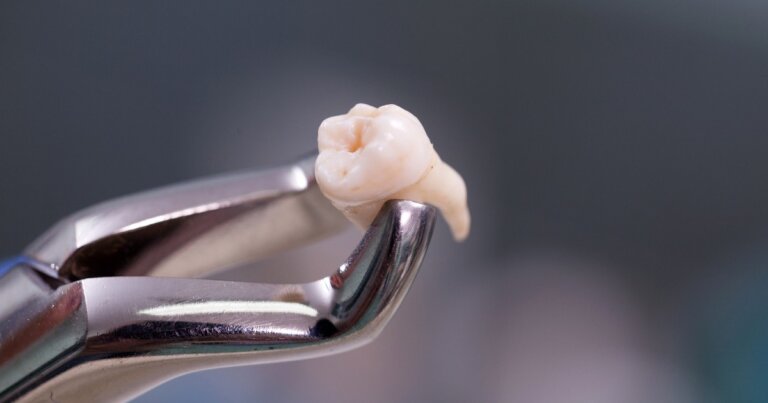
Potential Risks Or Complications Of Wisdom Tooth Extraction
While generally safe, wisdom tooth removal can involve some risks, including:
- Pain and Swelling: Temporary discomfort managed with prescribed pain medication.
- Dry Socket: Premature loss of the blood clot at the extraction site can cause severe pain.
- Nerve Damage: Rarely, lower jaw extractions may affect nerves, causing temporary or permanent numbness. This is why a CBCT Scan may be recommended before extraction.
- Infection: Signs include persistent pain, swelling, fever, or pus discharge.
- Sinus Issues: For upper wisdom teeth, extraction may occasionally lead to sinus complications.
A detailed panoramic x-ray and even a CBCT Scan after a thorough examination by your dentist can better inform you of these potential risks. Following your dentist’s aftercare instructions is also crucial for a smooth recovery. If you have any concerns or notice any unusual symptoms during the recovery period, please contact us.
Cost of Wisdom Tooth Extraction
Wisdom Teeth Extraction can cost $325 to 700 depending on the level of difficulty. The codes relevant to wisdom tooth removal in the Ontario Dental Association’s Suggested Fee Guide appear as follows:
Removals, Impaction, Requiring Incision of Overlying Soft Tissue and Removal of the Tooth
- 72111 – Single tooth: $325
Removals, Impaction, Requiring Incision of Overlying Soft Tissue, Elevation of A Flap and EITHER Removal of Bone and Tooth OR Sectioning and Removal of Tooth
- 72211 – Single Tooth: $488
Removals, Impaction, Requiring Incision of Overlying Soft Tissue, Elevation of a Flap, Removal of Bone AND Sectioning of Tooth for Removal
- 72221 – Single Tooth: $652
Removals, Impactions, Requiring Incision of Overlying Soft Tissue, Elevation of a Flap, Removal of Bone, AND/OR Sectioning of the Tooth for Removal AND/OR presents Unusual Difficulties and Circumstances
- 72231 – Single Tooth: $700
Wisdom tooth extractions are considered a basic service under all dental insurance plans and should be covered to your maximum insurable limit, but be sure to find out from your dental insurance plan provider how much you are eligible for before going ahead with dental treatment. Our fees are consistent with the ODA Fee Guide.
For patients without dental insurance, Atlas Dental is pleased to offer dental financing through iFinance Dentalcard. Affordable payment plans start at 7.95% for terms of 6 months to 6 years. To learn more about Dentalcard dental treatment financing, follow this link.
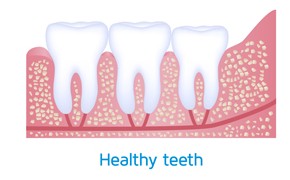
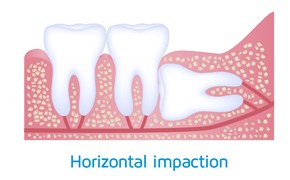
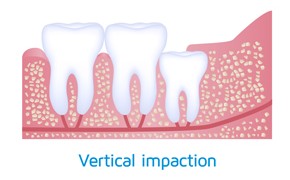
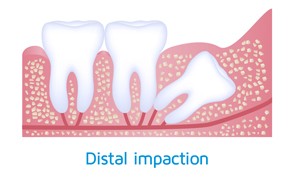
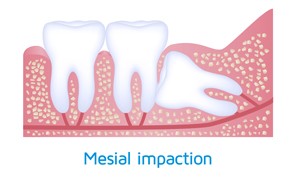
Steps In The Wisdom Tooth Extraction Procedure
The wisdom tooth extraction procedure typically involves the following steps:
- Initial Consultation: The dentist examines your mouth and takes X-rays to evaluate the wisdom teeth, such as a panoramic x-ray or CBCT Scan.
- Anesthesia: Local, sedation, or general anesthesia is administered to ensure comfort.
- Extraction: The dentist makes an incision, removes the tooth, and cleans the site.
- Stitches (if needed): Dissolvable stitches may be placed to aid healing.
- Post-Operative Care: Follow specific guidelines for pain management, oral hygiene, and dietary adjustments.
It’s important to note that the exact steps involved in the wisdom tooth removal procedure may vary depending on the individual case, the position of the teeth, and the complexity of the extraction. If you have further questions about Wisdom Tooth Extraction, please contact us.
Frequently Asked Questions About Wisdom Tooth Extraction
- Is wisdom tooth extraction painful?
The procedure itself is pain-free due to anesthesia. Some discomfort and swelling after the surgery are normal but manageable with pain medications and proper aftercare.
- How long is the recovery period?
Recovery typically takes 7–10 days, although most swelling and discomfort subside within 3–5 days.
- Can I return to work or school after wisdom tooth removal?
It’s best to rest for 1–2 days post-surgery. Avoid strenuous activities for a week.
- Are all wisdom teeth removed at once?
Yes, in many cases, all problematic wisdom teeth are extracted in a single appointment for convenience and to minimize repeated recovery periods.
At Atlas Dental, we provide safe and effective wisdom tooth removal with options for same-day appointments and sedation dentistry. Contact us today to schedule your consultation or book your appointment online to get relief from wisdom tooth pain!

